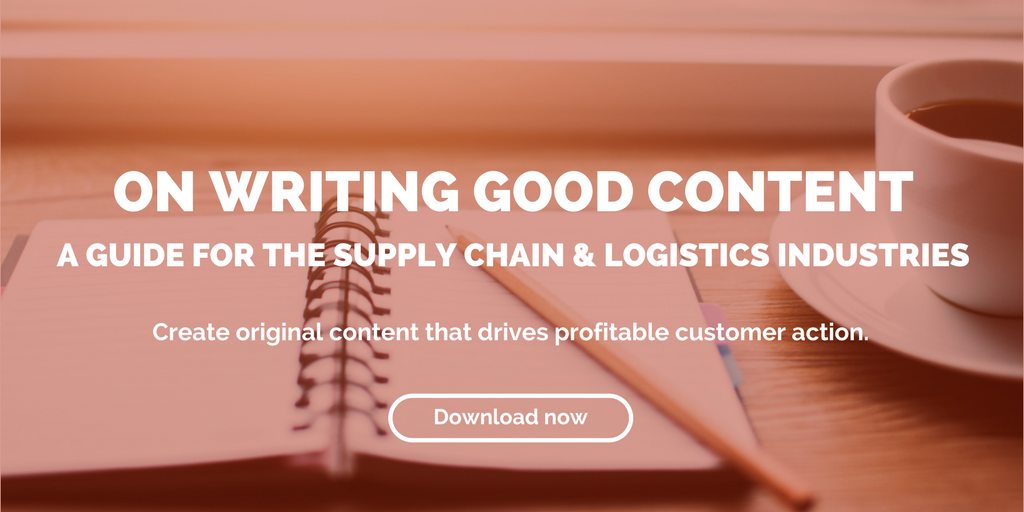
by Fronetics | Jan 12, 2016 | Blog, Leadership, Marketing, Strategy, Supply Chain, Talent

Recruiting and retaining top talent is one of the largest issues the supply chain faces today. It has, in many ways, become an industry of gaps: skills, talent, and gender, to name a few. How can companies secure their future by acquiring, developing, and keeping employees with the potential to undertake future leadership roles?
Fronetics Strategic Advisors works with clients to understand and execute on talent acquisition, performance management, learning and development, and succession management. We also work with clients to design and develop roles and responsibilities, on leadership development, mentoring and counseling, and on performance management and compensation strategies.
Here are our most-read talent articles of 2015:
While the number of full-time women in the workforce is up 15% since 1979, the number of women in the manufacturing sector is the lowest it has been since 1971.The gender gap extends more broadly to the supply chain, as well, with 70% and 80% of positions held by men. This article examines the talent crisis within the industry as an opportunity to help close the gender gap, and offers suggestions for building that bridge. Read the full article.
This interview with Rodney Apple, founder of the SCM Talent Group and supply chain recruiter for the majority of his 19-year career within the staffing industry, examines the challenges facing the industry and opportunities to address the talent crisis moving forward. Read the full article.
The outlook seems dire: by 2025, 60 million baby boomers will exit the workforce, leaving a gigantic gap when 40 million millennials take their place. What’s more, as few as 20% of the workforce will possess the broad range of skills required of 60% of all new supply chain jobs. The good news is that this looming crisis represents an ideal opportunity for recent college grads and mid-level supply chain management. Companies hoping to appeal to top candidates in the future should be proactive about meeting their professional needs through initiatives like competitive salaries and cross-functional training — or else, they might miss out. Read the full article.
Zappos offers new hires a $4,000 bonus to quit after an initial training program — and it actually has helped them retain top talent. Offering an early out to employees can be an effective method to detect personnel issues up front and ultimately can save your company from a major financial loss in the future. Read the full article.
When it comes to your career, connections matter. This article lists five reasons why building a strong network is crucial to your professional success. Read the full article.
Millennials — or, those born after 1981 — potentially could breathe new life into the graying supply chain industry. This article examines who millennials are and how companies might attract and retain talent within this oft-misunderstood generation. Read the full article.
Promising employees expect more from their employers when they outperform their peers — and not just in terms of compensation (though that is very important). When those expectations are met with disappointment, the company is at risk for losing top talent. This article discusses strategies for mitigating the loss of talented employees. Read the full article.
According to one study, only 12.5% of companies in the supply chain industry engage in formal succession planning, or the process of identifying top internal performers with the potential to fill key leadership positions. With the dearth of talent facing the supply chain, employers would be wise to invest in succession planning (and their most promising employees) — particularly through these three aspects of the process. Read the full article.
Focusing on education and training, employee retention and growth, and rethinking the talent pool itself does not address the bigger issue in the supply chain skills gap: the industry just isn’t perceived as sexy. What can companies do to overhaul their image and attract new and qualified talent? Read the full article.
Replacing employees is extremely costly — anywhere from 50 to 400% of their annual salaries, it is estimated — yet more than 2 million people voluntarily leave their jobs each month. Companies who are not tending to their human resource assets may be taking a major financial hit. Here are five employee retention strategies to help create a culture where employees are satisfied and interested in working for you long term. Read the full article.

by Fronetics | Jan 11, 2016 | Blog, Content Marketing, Logistics, Marketing, Social Media, Strategy, Supply Chain

Over the past year we have helped many clients both develop and execute social media strategies. We have also disseminated information on how companies can use social media as an effective business tool.
Here are the top 10 social media articles from 2015:
Leads are essential to the growth of your business, and your marketing strategy is built around finding and connecting with leads. So when 92% of all marketers indicate that their social media efforts have generated more exposure for their businesses, you should take note and make social media part of your prospecting strategy. Read the full article.
The supply chain makes the world go round. In order to be one of the leaders in the chain, it’s important to remember that internet users make up nearly half of the world’s population and that social media is on the rise. Don’t miss that boat. Read the full article.
Many transportation and logistics companies think about social media and how to use it, but cite a lack of time as a reason they haven’t explored the various platforms. Thinking about how social media can work for your logistics or transportation company is the first stop towards progress. Read the full article.
Social media is an ideal marketing platform for small businesses because it can be relatively inexpensive but have a high impact on growth. With a targeted strategy in place and a little time, your company can cultivate your brand, engage with customers, and form business relationships. And because small companies can be nimble, you can continually adjust your strategy to ensure the return on investment keeps paying off. Two companies that have seen social media to be effective: Coyote Logistics and Transplace. Read the full article.
The social economy is estimated to be $1.3 trillion U.S. dollars annually. Social media is more than a collection of personal commentary, photos, and inspirational quotes. Increasingly, social media creates an opportunity to gather information, and social media is becoming a useful tool for businesses to connect with other businesses and clients. Although Facebook is notorious for gathering information, social media companies are not the only companies who can gather intelligence. Read the full article.
Offering unparalleled access to leads and face to face communication with prospects and customers, trade shows prove to be a successful marketing strategy for many companies. But is your company making the most of trade shows? Companies that integrate modern digital communication practices into tired trade show routines are likely to increase lead to customer conversion rates while shortening lead and sales cycles. Read the full article.
Companies within the logistics and supply chain industries have been slower to participate in social media than other industries. The primary reason being because of a lack of understanding of what social media is and the role it can play for business. Unfortunately, companies who do not participate in social media miss out on opportunities – and revenue. Read the full article.
Using the information and intelligence gathered is essential. There is; however, another critical element: engagement. Engagement is a differentiator. Without engagement you are a lurker. You don’t want to be a lurker. Read the full article.
Social media has been found to be a strategic tool for logistics companies. Check out our infographic. Read the full article.
Through the use of social media you can enable consumers to make more informed purchase decisions. Additionally, you can use social media to answer questions and better educate consumers on how to use your product thereby reduce no fault found returns. Read the full article.
Social media is an incredible tool; however, for it to be effective it must be driven by strategy, be consistent, and must have someone managing the execution. At Fronetics, our social media strategists distribute content, curate content, engage your target audience, and monitor your social networks. We develop a social media strategy that aligns with your company’s goals. We analyze your competition, classify your target audience & cultural attributes, identify the influencers in your industry, recommend platforms, detail best engagement practices, create social media schedules, and identify specific tactics that deliver results. Through the proper execution of social media, your brand is given a voice and personality, and becomes more accessible to your target audience.

by Fronetics | Jan 7, 2016 | Blog, Content Marketing, Marketing, Supply Chain

Last year was big for content marketing within the logistics and supply chain industries. While companies in general had been hesitant to adopt an inbound marketing approach, many caught on and found this strategy to have a major impact on business in 2015.
Fronetics has helped many clients achieve their goals through targeted inbound marketing efforts. Our data-driven approach aligns business objectives with a marketing program that delivers results with a targeted ROI.
Here are the top content marketing articles in 2015:
1. Five reasons companies in the supply chain and logistics industries should use inbound marketing
Though many companies within the supply chain and logistics industries tend to disregard inbound marketing, it actually can be a wildly successful strategy. Here are five reasons why companies in these industries should be using inbound marketing. Read the full article.
2. Content and Social Media: A Perfect Match for Customer Engagement and Business Growth
This guest blog by Kecia Gray, former vice president of corporate marketing & communications at Transplace, discusses how social media has become an integral part of Transplace’s marketing and communications strategy. It has been key to expanding brand awareness and the company’s thought leadership in the logistics and transportation space. Read the full article.
3. Content as a marketing tool for the logistics and supply chain industries
Fronetics Strategic Advisors conducted a survey focused on the use of content within the logistics and supply chain industries found that companies are using content as a marketing tool and are realizing results. Read the full report.
4. Report: Content use within the logistics and supply chain industries
The survey on industry content use conducted by Fronetics found that companies within the logistics and supply chain industries are creating more content than ever before. Respondents reported using content marketing in order to strengthen overall brand awareness, generate leads, and establish the company as an industry leader. Read the full report.
5. All content is not created equal. Why you need good content.
Good content drives profitable customer action, while bad content is a waste of time and precious resources. What makes good content, and how can you get it? Read the full article.
6. Get Results from Content Marketing by Telling Great Stories
Guest author Thijs Messelaar, a 15-year content-writing veteran, explains how the best content marketing is like a really good story. You must engage your audience emotionally to get them interested in you and to earn their trust. Read the full article.
7. Content marketing ROI for reverse logistics companies
Inbound marketing is effective in garnering consumers’ attention, but it is important to assess return on investment. Reverse logistics companies can use a fairly simple formula to calculate content marketing ROI. Read the full article.
8. Content marketing for the logistics and supply chain industries
Fronetics developed a content marketing guide specifically for companies within the logistics and supply chain industries. In it is step-by-step instructions, templates, lists, and samples to walk you through building your own content strategy. Read the full article.
9. Using inbound marketing to market and sell luxury real estate
Many luxury real estate firms are already using digital and social media to carry the lifestyle brand they’ve built around their properties into the online world. With the use of inbound marketing, they are creating new virtual “touch points” to connect with affluent buyers. Read the full article.
10. Six digital and content marketing tasks to outsource
Outsourcing several digital and content marketing tasks can help companies enjoy a reduction (or cost savings) in operating costs, improve their focus on core competencies, and let employees concentrate on their highest and best use. This article identifies six areas where companies can leverage outsource partners to support their digital efforts. Read full article.
If you are looking to increase business in 2016, consider contacting Fronetics to develop a content marketing strategy. We work with you to create an individualized plan for your specific situation and needs. We identify challenges, trends, and opportunities and take action so that your content marketing program constantly evolves and delivers results.
You may also like:

by Fronetics | Jan 4, 2016 | Blog, Logistics, Marketing, Social Media, Supply Chain
 Companies within the logistics and supply chain industries are revolutionizing their marketing strategies by leveraging social media. They are using blogs, in particular, to establish their position as thought leaders and to drive business to their sites.
Companies within the logistics and supply chain industries are revolutionizing their marketing strategies by leveraging social media. They are using blogs, in particular, to establish their position as thought leaders and to drive business to their sites.
Fronetics is, once again, looking to uncover the top industry blog of 2015. We need your help by voting for your favorite blog in the logistics and supply chain industries. Vote here! Answers will be collected through January 15, 2016.
See last year’s top blog and honorable mentions!
Your nominations are confidential and will be reported in aggregate with no identifiable information (individual or company) attached. Please contact [email protected] with any questions.

by Fronetics | Nov 5, 2015 | Blog, Content Marketing, Data/Analytics, Leadership, Marketing, Strategy

We all want to see the fruits of our labors. Whether launching a product or a new social media campaign, we look for instantaneous numbers that will affirm we made the right choices. But here’s the problem: not all metrics are created equal.
So-called vanity metrics are measurements that have no bearing on your bottom line but can give you an inflated sense of success. Generally, they are easy to calculate but are influenced by too many factors—and are too vulnerable to random external events—to be reliable.
Website visits and number of subscribers are two classic examples. A spike in homepage hits may be the result of your marketing efforts, or it may be because of ghost spam. (Or, both.) Regardless, more visits do not necessarily correlate to increased revenue—just more visits. In the same vein, having 100,000 email subscribers means nothing if only 1% are opening them. You actually could be losing money in terms of resources allocated if the emails aren’t helping drive sales.
That’s why it is crucial to focus on return on investment instead of vanity metrics. You could waste hours reviewing a hundred different analytics that tell you nothing about how revenue was affected by a particular effort. Or, worse, you could use vanity metrics to justify decisions that don’t achieve their ROI.
As a simplified example: say you spend $100 on a banner ad for a new product on an industry conference website, and your analytics report that 100 people clicked through. This sounds like success! But don’t celebrate just yet. When you dig past the vanity metric, you find an extremely high bounce rate. That means most of those click-throughs left your site immediately, neither engaging with your brand nor moving any closer to becoming a customer. In fact, you find that only one click-through converts. Was it worth paying $100 for this one customer? Probably not.
But say you ran another $100 banner ad on an industry publication website, one that targets a younger audience than you think your product fits. Only 20 visitors clicked-through, which sounds less successful than the other ad. But when you follow those 20 click-throughs down the sales funnel, you see that 15 ended up purchasing $1500 worth of product. Already, the ad has paid for itself 15 times over. You’ve also learned that perhaps a younger audience is more suited to this product. The ROI proves the vanity metric was quite misleading in this case.
Lean-startup pioneer Eric Reis, who coined the term vanity metrics, said, “The only metrics that entrepreneurs should invest energy in collecting are those that help them make decisions.” In other words, measure the things that will tell you if an effort was profitable so you know where to put your time and money.
While vanity metrics tell you nothing about your bottom line, ROI can help you determine whether it was worth spending your resources in a particular way. This is extremely useful on platforms like blogs and social media, where things are constantly changing. Using ROI as a litmus test, you can keep experimenting and making sure you’re using these tools effectively. Tracking a vanity metric like number of followers, which is likely to build over time regardless, gives you no indication of which experiments were successful and which weren’t.
Your resources are limited, so it’s crucial to evaluate your efforts with meaningful numbers that illustrate their effect on your bottom line. Calculating ROI might take some time—both in the few extra minutes to do the math and the amount of time that needs to pass before all the data is available—but that number will be infinitely more valuable to you than any vanity metric on your Google Analytics report.
What metrics do you report to your team?
Related posts:
When it comes to marketing we work with our clients to create and execute strategies that drive success and elevate their brand position within the industry. Unlike other firms, we align marketing programs with business objectives and, through a data driven approach, are able to deliver results with a targeted ROI. Our team is comprised of strategists, marketing professionals, writers, designers, and experts in social media. Together we leverage our experience to increase brand awareness, position our clients as thought leaders, drive meaningful engagement with prospects and customers, and help businesses grow. Learn more

by Fronetics | Nov 4, 2015 | Blog, Content Marketing, Marketing, Supply Chain
3 things supply chain hiring managers should look for when hiring a copywriter.
Since 94% of domestic B2B buyers conduct research online to make purchase decisions, maintaining high-quality content on your company’s website is crucial for attracting new business. But who has time for web upkeep, much less for the generation of new blog posts, emails, and various other content? Enter the copywriter.
An effective copywriter can help drive consumers to your website, convince them of the quality of your products/services, and ultimately help convert those leads into customers. A lot of writers can do one of these functions. The gold standard, of course, is a copywriter with a proven track record in all three functions.
How do you know if a copywriter will be effective for your business? Here are a few specific skills and experiences supply chain hiring managers should look for in a potential hire:
Someone who understands SEO.
An SEO-savvy copywriter can impact your business by increasing the number of visitors (i.e., potential customers) to your site. That’s because 77% of today’s buyers use Google to research information about products.
A copywriter trained in search engine optimization (SEO) knows how to write and format your site so it gets prioritized by Google in web queries for your products. Three of four people will click on the top five search results. So the closer you can be to those top five results, the better your chances at driving a buyer to your site. That’s a crucial first step in converting that lead into a new customer.
Look for SEO training or experience on a potential copywriter’s resume. And ask for any metrics illustrating how his/her search-engine-optimized content has increased organic traffic to a client’s website. A copywriter who understands SEO can help achieve the same result for you over time.
Someone who understands branding.
Sure, it’s great if you can find a copywriter with experience in the supply chain — the vocabulary and industry knowledge are already in place. But, likely, a solid writer who has developed content for a variety of industries has the technical skills and resourcefulness to get up to speed quickly.
Consider the value of a candidate who also has marketing writing and branding experience. This person has the know-how to create content driven by your business objectives and a mind for strategy that can promote your image among consumers and other businesses.
A 2015 global study on B2B branding has shown its positive impact on the perceived quality of a product and creation of new market opportunities. Branding instills confidence and trust among consumers.
The marketing copywriter can craft a consistent, compelling brand narrative across all of your digital channels. That means your website, blog posts, white papers, social media, emails, etc., will work together to solidify and enhance your business’s reputation in the marketplace, which will serve you beyond any individual campaign.
Someone who understands user experience.
User experience plays a vital role in conversion: the more positive the customer’s interaction with your business, the more motivated s/he will be to purchase from you. Additionally, Gartner Research estimates that by 2020 customers will manage 85% of their relationship without talking to a human. That means your web content will bear most of the user-experience burden.
A copywriter who understands user experience anticipates what buyers are seeking at any given point on your website and adjusts the copy so that the answer is clear and easy to find. Paragraphs of dense, technical copy on a product page could easily turn a buyer away, for example. A well-placed, well-written call-to-action, however, could lead to a purchase.
To find a copywriter who understands user experience, look for content that is not only polished, but also helpful, persuasive, and, above all, accessible. Writing samples should reflect where in the sales cycle a user would encounter it. That candidate could play a vital role in helping you convert leads into customers.
Hiring a copywriter represents an opportunity to bring someone on board who can do more than produce content: they can help achieve your business goals.
Related posts:







